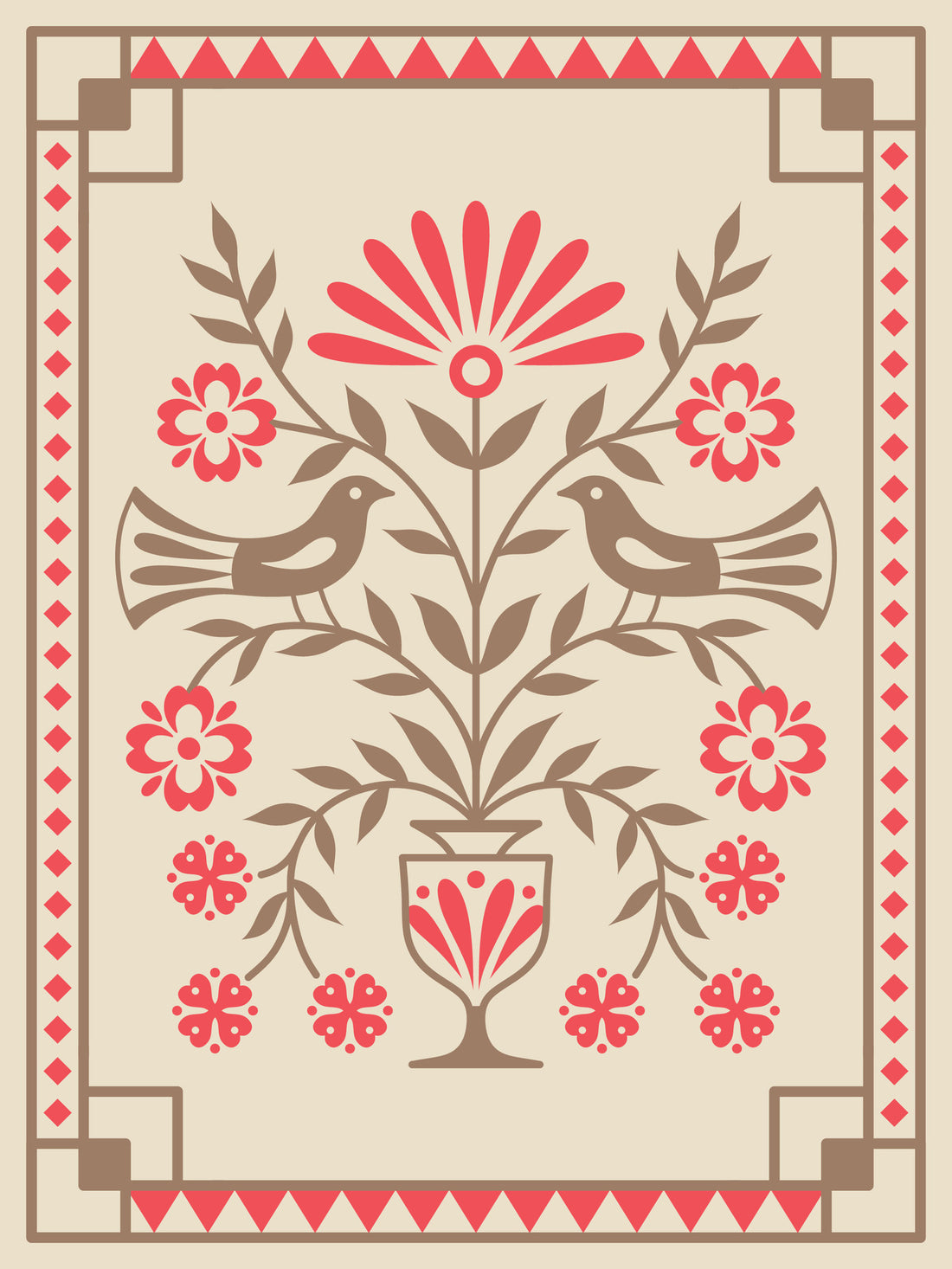Scandinavian folk art is a treasure trove of intricate motifs and symbols, each holding a deep cultural significance. Passed down through generations, these symbols in folk art tell stories of ancient beliefs, mythological tales, and everyday life. In this blog, we embark on a journey to unveil the hidden meanings behind the enchanting motifs of Scandinavian folk art. Let us explore the language of symbols, connecting us to the rich heritage and storytelling traditions of the Nordic region and delve into the influences on Marja-Leena's art and designs.
The Artistry of Symbols: Understanding the Language of Scandinavian Folk Art
Symbols are the essence of communication in Scandinavian folk art. Through artistic expression, these symbols convey deeper meanings, acting as a visual language that binds the region's cultural fabric. We delve next into the significance of using symbols in folk art to express beliefs, values, and a deep connection to nature.
Mythological Motifs: Tales of Gods and Heroes in Folk Art
Scandinavian folk art draws inspiration from the captivating world of Norse mythology. Mythical creatures, gods, and heroes find their way into intricate motifs, portraying epic tales and beliefs. Some folk art uses symbolism of powerful deities like Odin, Thor, and Freyja, as well as the enigmatic creatures like dragons and the world serpent (Jörmungandr).

Lokis Gezücht.
Loki's brood; Hel, Fenrir and Jörmungandr.
Protective and Prosperous Symbols: Safeguarding Tradition and Well-being
Certain symbols in Scandinavian folk art act as guardians of tradition and harbingers of prosperity. The beloved Dala Horse, an iconic motif originating from Sweden, symbolizes strength and good luck. Some folk art also use symbolism like the Sun Wheel, representing the ever-turning cycle of life and the changing of seasons.
Love and Prosperity: Symbols of Joy and Abundance
Love, hope, harmony and prosperity are celebrated in folk art with motifs like the heart and the eight-pointed star or rose. The heart motif embodies affection and unity, adorning various art pieces. Meanwhile, the eight-pointed star signifies hopes for a prosperous and abundant life, reflecting the desire for wellbeing and good fortune.

Traditional Norse eight pointed star or rose pattern
Regional Variations: Symbols Unique to Different Scandinavian Cultures
Scandinavia is a tapestry of diverse cultures, and each region boasts its unique symbols and motifs. We explored the dragon motif, prominent in Norwegian folk art, symbolizing protection and strength. In contrast, we unveiled the distinctive symbols of Swedish and Finnish folk art, each with its own stories and cultural significance.
As we journeyed through the world of Scandinavian folk art motifs, we saw the depth of symbolism and storytelling encapsulated within each design. These motifs bridge the past with the present, preserving ancient beliefs, mythology, and cultural heritage. Unveiling the symbols of Scandinavian folk art connects the profound history and artistic legacy of the Nordic region and also provides an understanding oft he influences on Marja-Leena's designs. As we admire these enchanting motifs, let us cherish the language of symbols that binds us to the heart of Scandinavian culture and revel in the enduring beauty of these cherished traditions. Discover how Scandinavian folk art influences can be seen in Marja-Leena's cushions, fabrics, mounted prints and patterned fabric eye pillows.

One Basket Only Mounted Print by Marja-Leena



